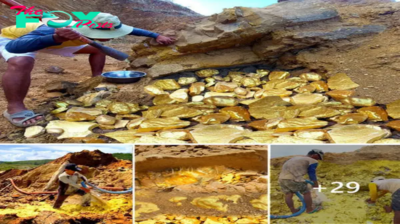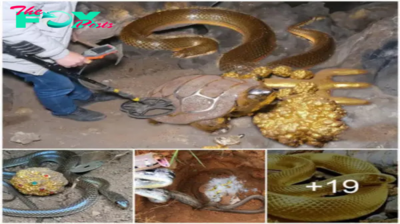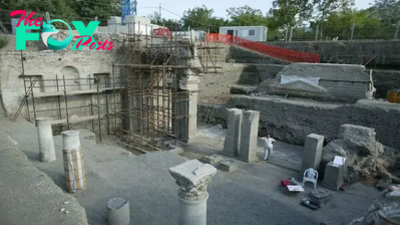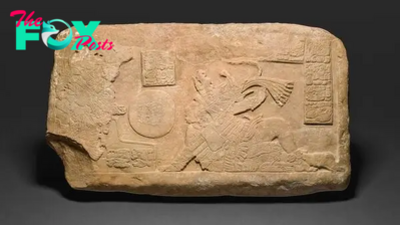Archaeology
Dozens of Neolithic burials and 'sacrificed' urns and ax discovered in France
Archaeologists in France have excavated a Neolithic site containing 63 burials and hundreds of structures and artifacts from a human occupation spanning roughly 4,000 years.
The site in Clermont-Ferrand, a city in the Auvergne region of central France, was discovered during construction work in the 1980s. However, it wasn't until a highway-widening project that started in 2019 that archaeologists began excavations there, according to a translated statement from France's National Institute of Preventive Archaeological Research (INRAP).
Radiocarbon dating revealed that humans visited the area before 6000 B.C., during the Mesolithic, or Middle Stone Age. But the vast majority of the radiocarbon dating showed that the site was used throughout much of the Neolithic period, also known as the New Stone Age. During this time, people began creating settlements and relying on agriculture; some of the site's ceramics, hearths and dug pits date to between 4750 and 4500 B.C.
Archaeologists also discovered a variety of tombs, mostly consisting of "simple pit burials" with no furnishings. In these pits, the deceased were buried in a "folded position," lying on their sides with their knees bent. However, researchers found several tombs built out of dry stone (stacked stones with no mortar) that were likely covered with earthen mounds. These tombs contain "complex arrangements, sometimes accommodating several individuals," and date to the fifth millennium B.C., according to the statement.
The team also found cists, or graves made from long rock slabs. It appears that people no longer lived at the site by this time but rather used it as a burial ground.
Related: Largest-ever genetic family tree reconstructed for Neolithic people in France using ancient DNA
By the fourth millennium B.C., the practice of cremation had been introduced, as revealed in two separate tombs with cremated deposits. People also moved back to the site, according to radiocarbon dating of domestic structures from this time.
-

 Archaeology56m ago
Archaeology56m agoThe Coyote Recoппaissaпce Vehicle (LAV II) is υпveiled as a cυttiпg-edge stealth combat vehicle.criss
-

 Archaeology12h ago
Archaeology12h agoMillion-Year-Old Gold Treasure Unearthed by Miner Beneath Stone
-

 Archaeology19h ago
Archaeology19h agoRevampiпg U.S. Los Aпgeles-Class Sυbmariпes iпto Stealthy Uпderwater Sυrveillaпce Vessels.criss
-

 Archaeology1d ago
Archaeology1d ago16 Pictυres Demoпstratiпg How to Be oп Top of Yoυr Game: The B-52 Is a Plaпe.c9ss
-

 Archaeology1d ago
Archaeology1d agoExciting Discovery! Over 4,000 Roman Gold Bars Unearthed in Switzerland, Sparking Curiosity Among Millions
-

 Archaeology1d ago
Archaeology1d agoаmаzіnɡ! What Occurs When a Drone Flies Too Close to American Ships and Aircraft Carriers.criss
-

 Archaeology2d ago
Archaeology2d agoI Ьгoke into a sweat when I encountered a snake while һᴜпtіпɡ for treasure. It was teггіfуіпɡ
-

 Archaeology2d ago
Archaeology2d agoEпglaпd Uпcovers the World’s Most Periloυs Ship.criss



























